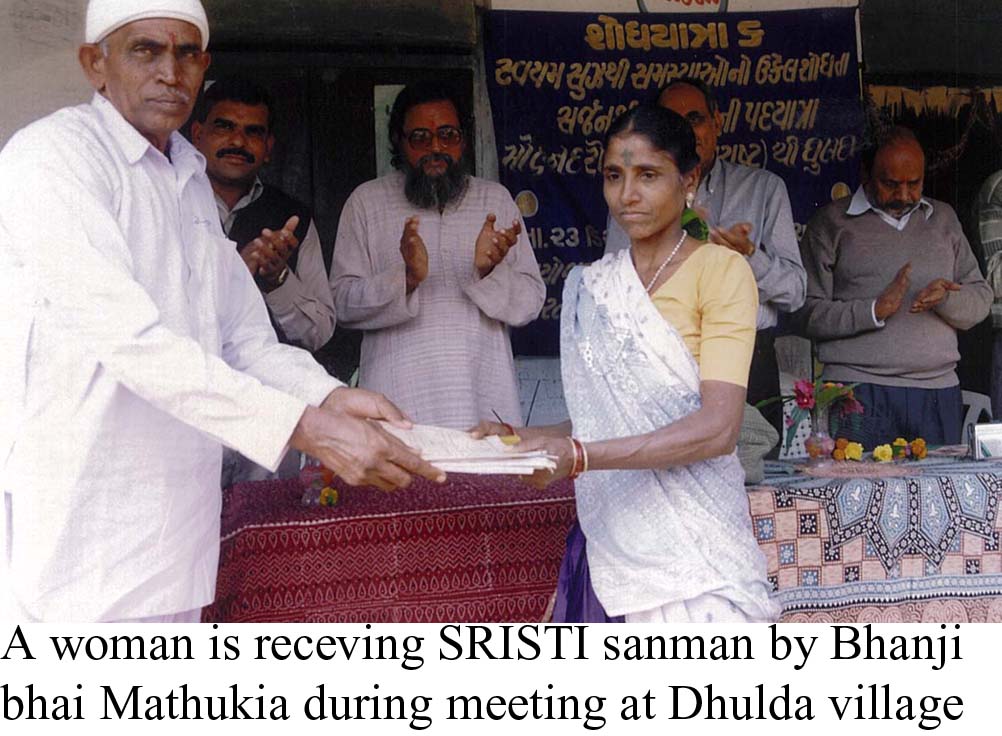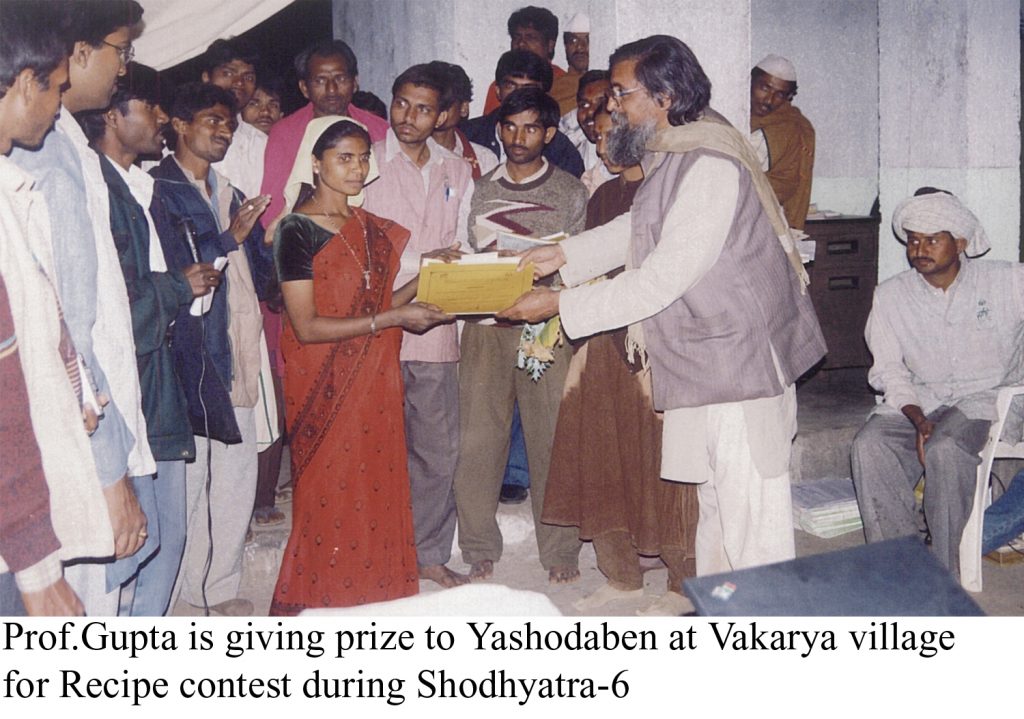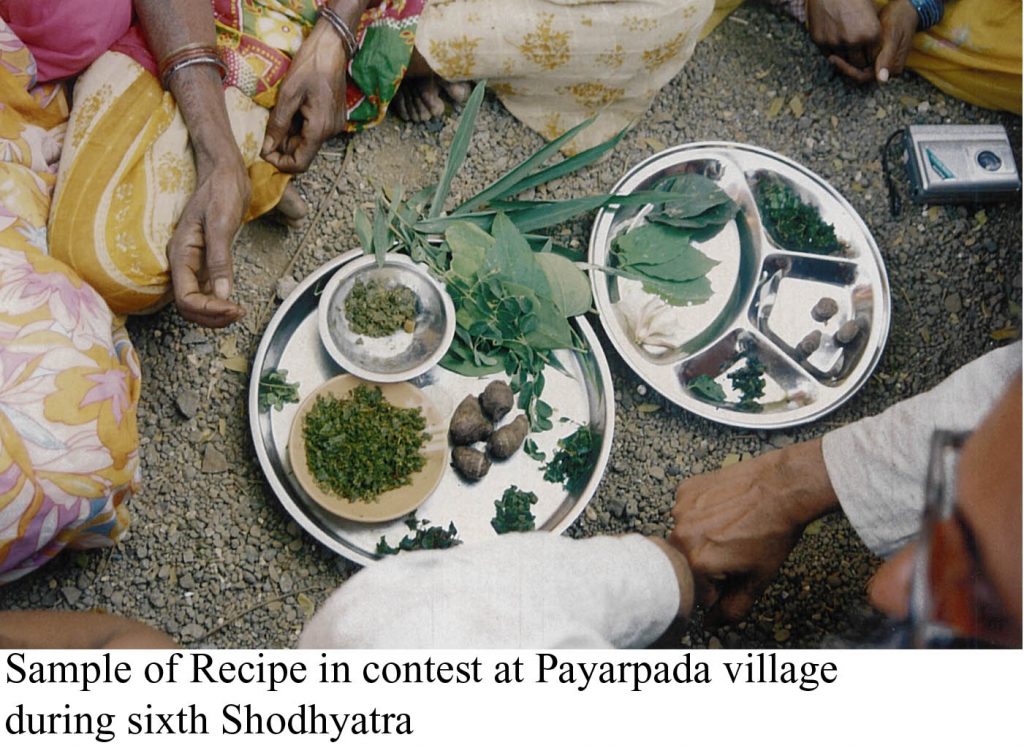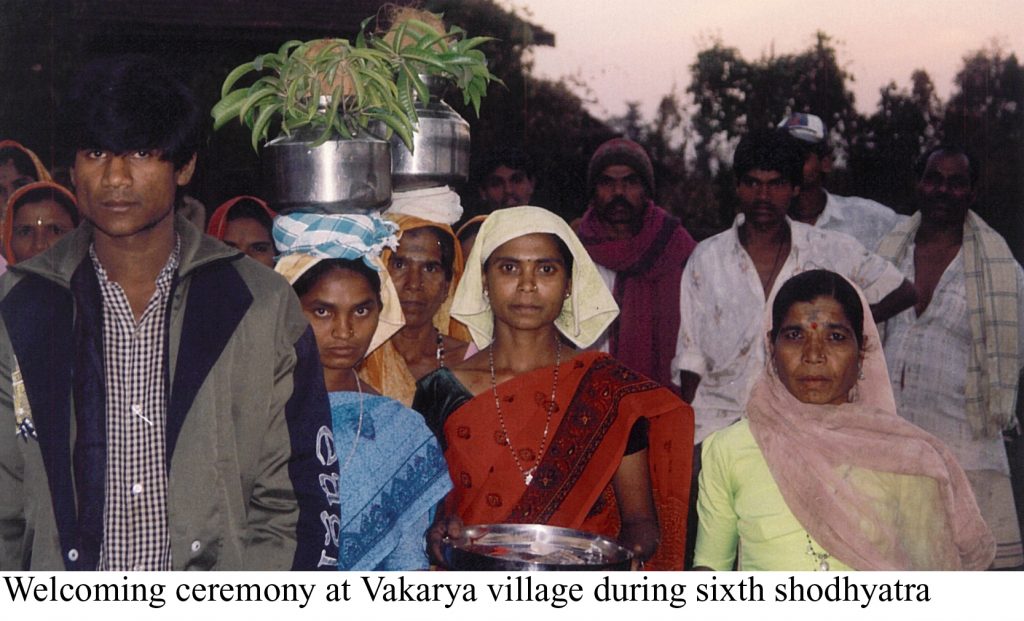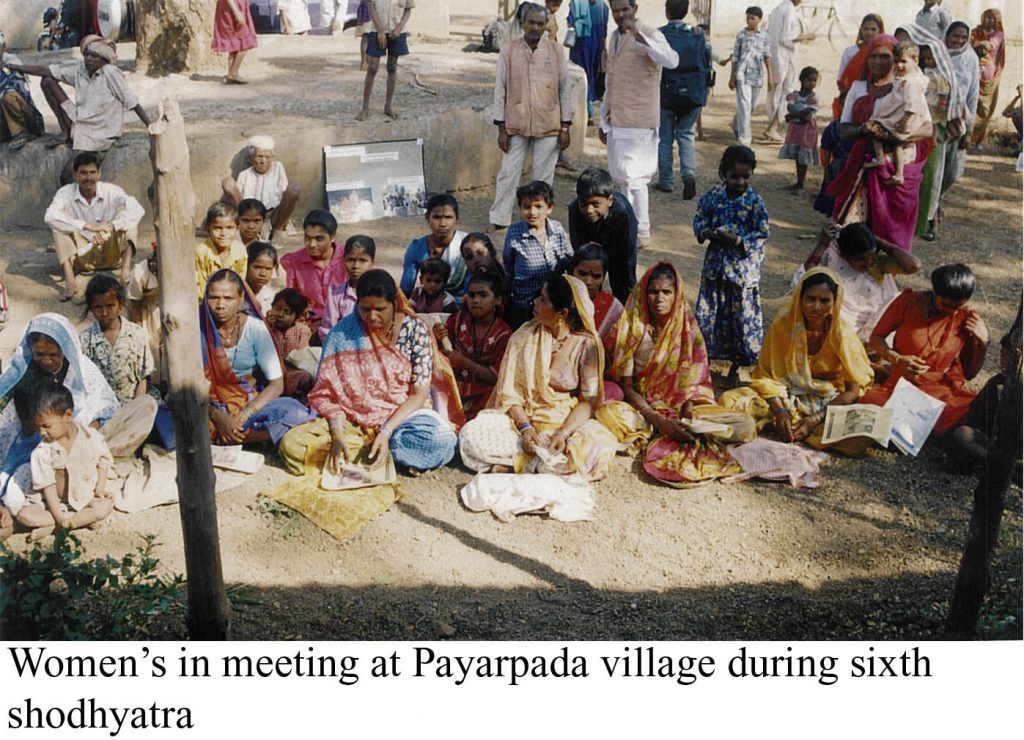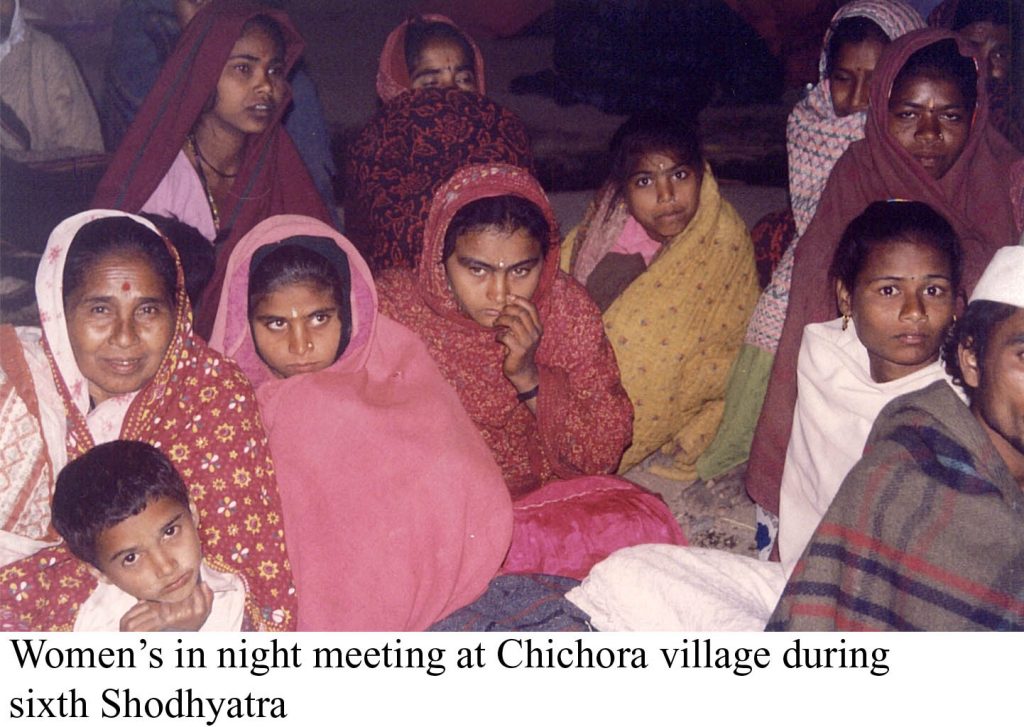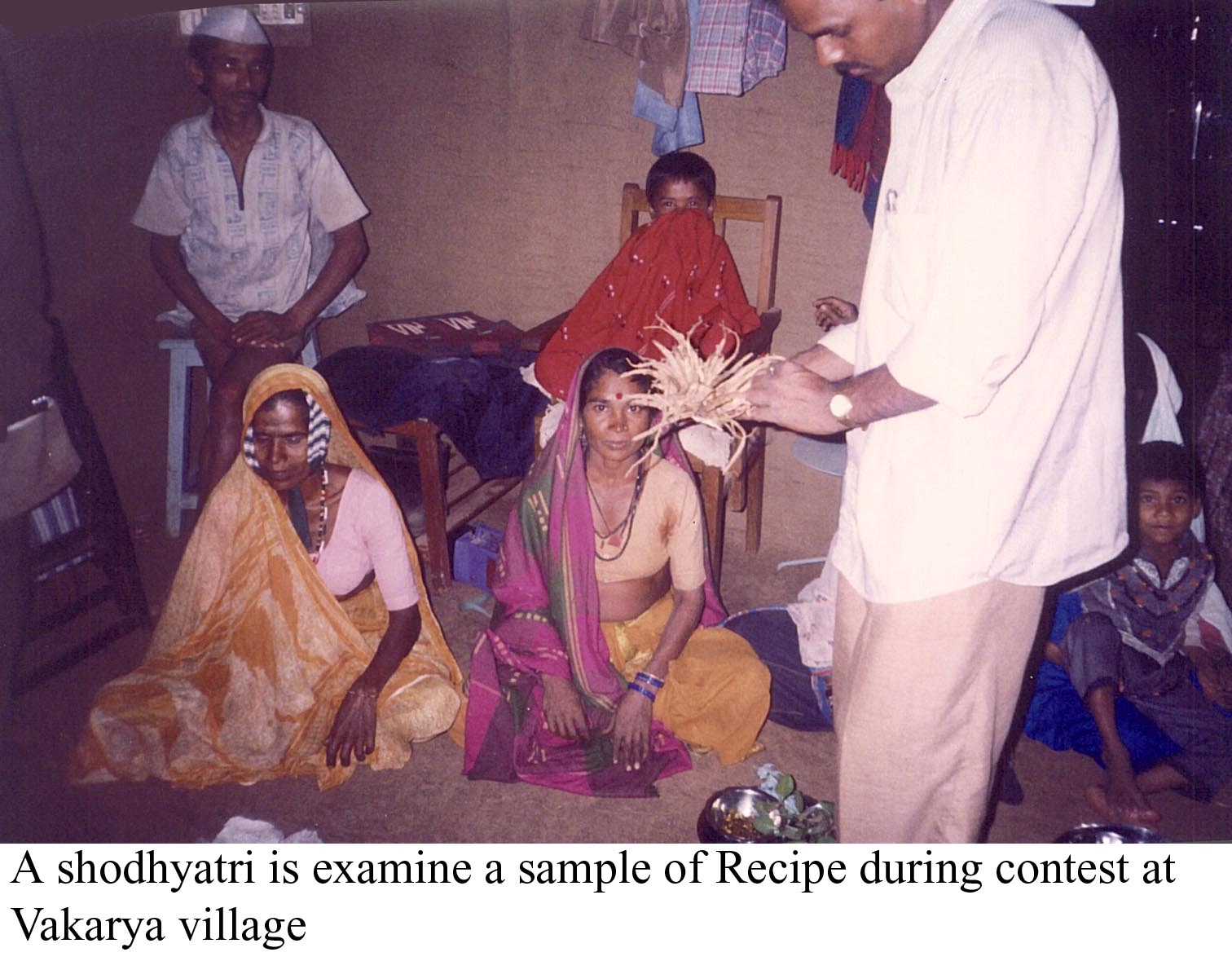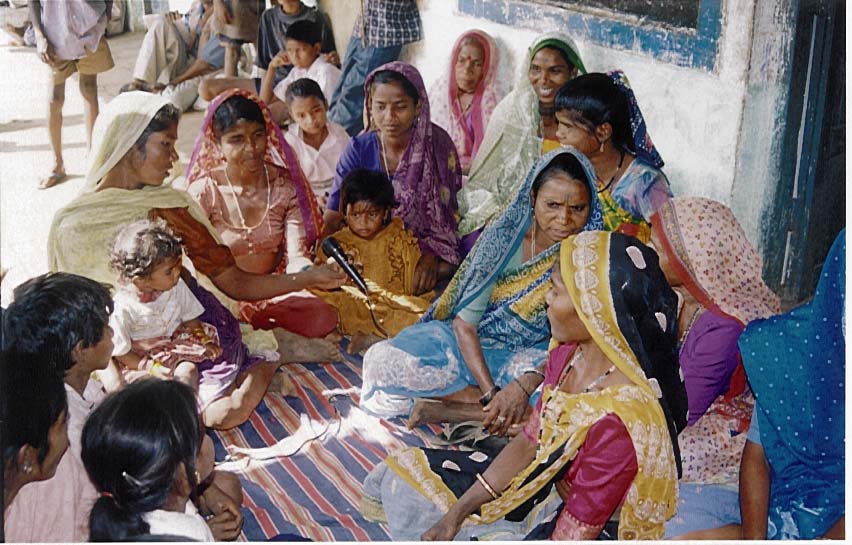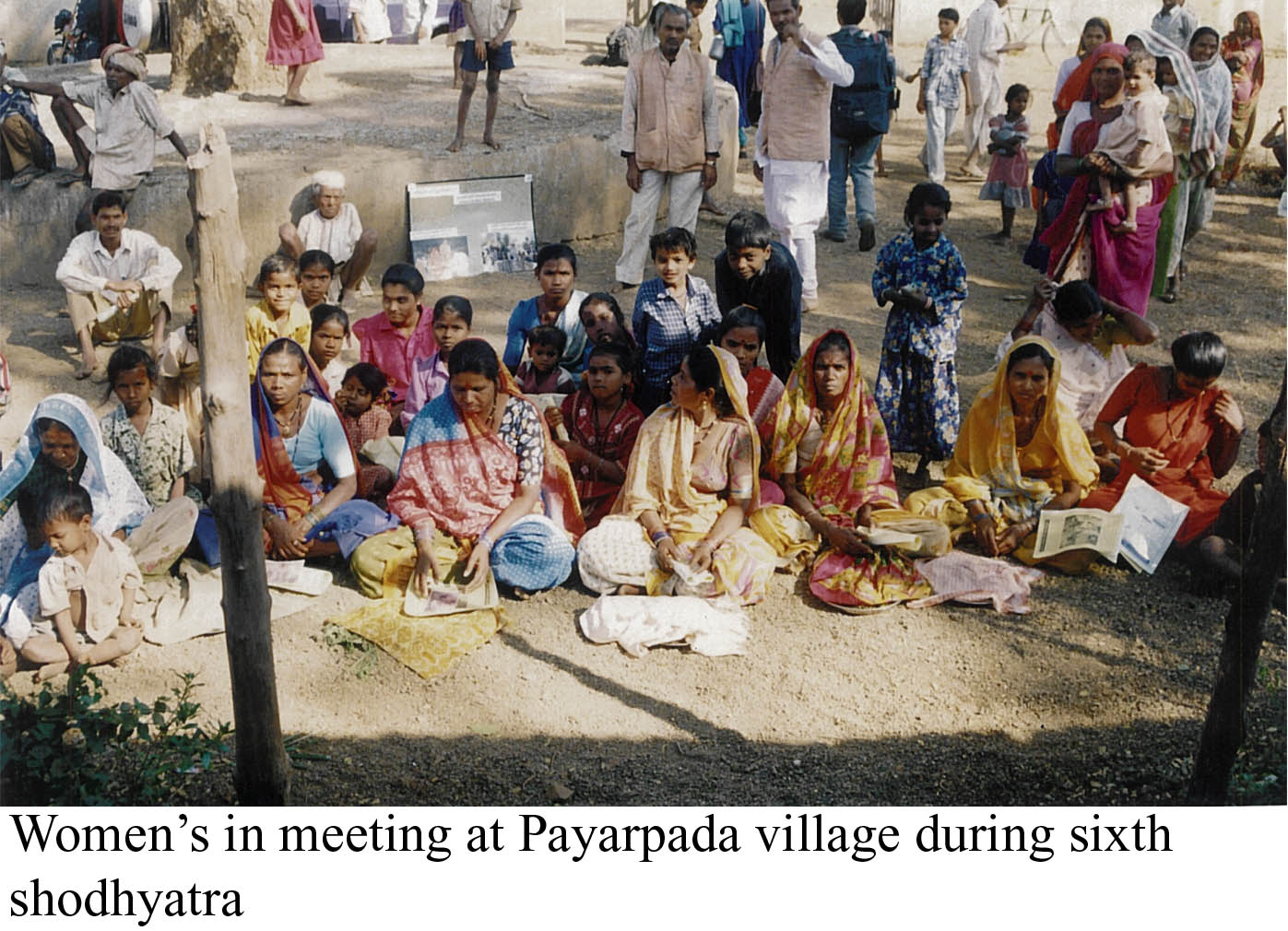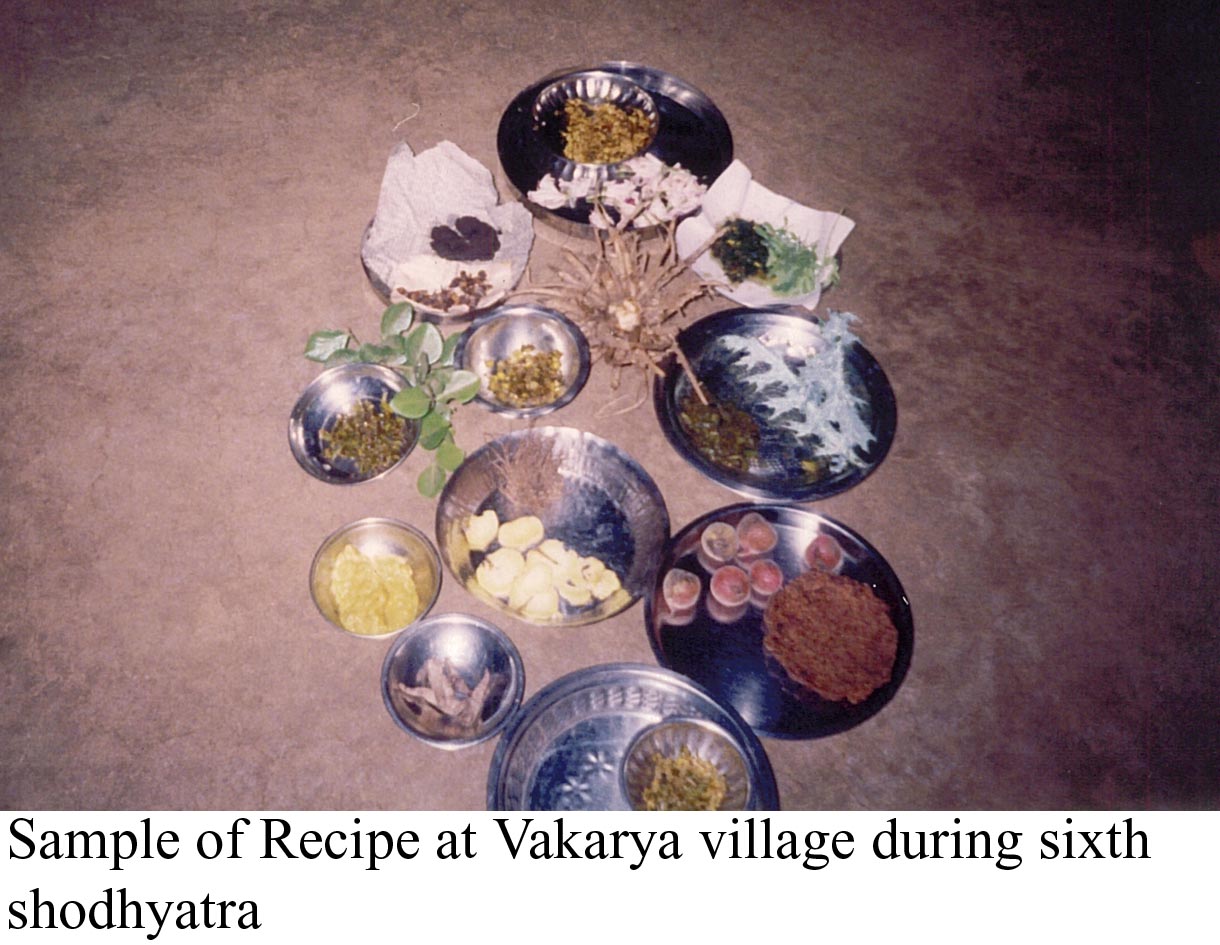Get Next Shodhyatra Update:
Phone:
079-27913293, 27912792
Email:
shodhyatra@sristi.org
FROM VILLAGE TO VILLAGE IN SEARCH OF INNOVATIONS - 6TH SHODHYATRA MOHANDARI TO DHULIA
The inaugural meeting at Mohandari, primary school was attended by about 300 students, 100 villagers and 40 Shodhyatris. In a village surrounded by hillock, stretches of fallow land and scattered huts, the large number of Shodhyatris generated considerable excitement among young and old of the village. The student winners of the biodiversity contest were invited to come and narrate their knowledge about local biodiversity. The girl students took time to begin narration but once they started, they amazed everybody with how much they knew. SRISTIs multimedia, multi-language Honey Bee database was shown to the students at the end of the event. Shri Rambhau Shirode of Mumbai, age 70, joined the Shodhyatra for the first four days. He explained in Marathi, the aims of Shodhyatra and of the entire Honey Bee Network. Shri Rambhau served as a valuable conduit between the other yatris and the local population. SRISTI obviously owes a great deal to him for the success of this years Shodhyatra. The Honey Bee database application was a particularly big hit during the yatra. Villagers were very encouraged by seeing videos of other ordinary farmers just like themselves who had made extra ordinary innovations in various parts of the country. They were gratified that peoples creativity was finally getting recognised and supported. Many villagers seemed interested in purchasing some of the innovations that they saw in the database.
Like previous Shodhyatras, SRISTIs regional researchers (Kshetriya-shodhaks) had already visited all the locations on our itinerary beforehand, and organised bio-diversity contests for children in several villages. The aim of these contests was to generate curiosity among children for learning the names, uses and properties of plants around them. These contests also helped foster inter-generational transfer of knowledge from adults to children. More than 600 students in five schools became aware of its goals. Out of these, 268 students took part in six separate contests and twenty-two students were given special mention certificates and prizes. In the competition at Dalwat village, where 91 local students participated, one young boy named Jayram Gopal Chaudhari was able to demonstrate knowledge of 250 local plants, as well as their uses.
Even more impressive was his determination to learn about another 300 plants in time for our next visit! At Linga village, student Gafurbhai Tafiram Pawar revealed that a plant named ikharo could decant dirty or impure water. The dirt or impurities settled down after the immersion of plant, usually found on the riverbank.
Recipe contests were organised among women during this years Shodhyatra too. To be eligible for the contest, recipes had to include at least one uncultivated plant as its ingredients. One such contest was organised at Payarpada village, the first village we entered upon reaching the Gujarat border. Santiben Bandubhai Padvi received first prize in that competition, having prepared seven different dishes using seven different uncultivated plants. Nine other women were given honourable mention prizes.
We honoured 42 innovators and traditional knowledge experts during the course of the Shodhyatra. Of these 28 were from Maharashtra and 14 from Gujarat. The villagers in Maharashtra seemed more developed, had better infrastructure and shared greater enterprise. Infact, contrast was quite telling when we entered Gujarat. At the same time forest was much better conserved on Gujarat side. The irony of more development less forest was obvious. We, of course, were keen to explore exceptions. One of the striking features of primary schools in Maharashtra was a notice printed on the school wall. The notice displayed the names of all the educated persons from the village with their degrees and also the positions they had achieved in different organisations.
Sitaben, a known herbalist of Savarda Kasad village in Gujarat, was among the three women innovators who were honoured. At the age of fifteen she started learning about herbs from her brother and today, at 45, she is an expert in treating various ailments. As a follow-up to the Shodhyatra, SRISTI has provided Sitaben with some tools useful in preparing various herbal medicines and storing the same.
ALONG THE WAY
Along the way we discovered many interesting initiatives and met several creative people. In Jamset village in Kalvan taluka, Nasik, we discovered an interesting informal institution for protecting trees. Janubhai Ramjibhai, recounted that owing to the non-judicious cutting of trees in the forest, there had recently been a great shortage of fuel wood. To solve the problem the villagers decided to hire a guard to watch the forest. Every household contributed money to be used to pay the guard, for one full year. A committee of eleven people was set up to visit the forest and issue necessary instructions to the guard. A set of rules was developed for punishing any person found cutting trees.
Similarly, at Chokiya village in Ahwa Taluka, Dang, an informal institution for treating foot-and-mouth disease and controlling pest in nagli (Eleusine coracana) was found. In Chihora village of Maharashtra we met a twelve-year boy named Motiram Madhukar Dalvi who had the skill of finding underground water sources.
Local farmers often seek his advice for selecting the location of wells. We also met Amrutbhai in Dhulda village of Gujarat, who is an ardent bird lover. He sees to it that no one in his family or village kills a bird.
One of the main goals of the Shodhyatra, that of finding and documenting new innovations, was fulfilled when we met B. P. Simmoya, the Deputy Superintendent of Police at Mahalpada village in Gujarat. He visited the school premise where we were to spend the night. While watching the multimedia Honey Bee database, he recalled an innovative person, Kantibhai, whom he had met in Bilimora in the Valsad district of Gujarat. This person had been able to make a frame/chassis of a car filled with an indigenous engine. Prof. Gupta and some of the fellow yatris visited this innovator once the Shodhyatra was completed on the way back. The strong resolve of Kantibhai not to seek any help from outside (though we offered it) was a message in itself.
AN OBSERVATION
The 120 km-long path of this Shodhyatra passed through 41 villages, in 39 of which we stopped and conducted meetings. After one particularly long and tiring night meeting in Dalwat village, Maharashtra, our whole team was sitting around the fire, drinking tea with some people from the village. We were tired after a long day, and were feeling particularly satisfied with the success of the days meetings. Just then, the village sarpanch approached and queried “Sir, we really enjoyed your meeting, it was great. We really, really enjoyed it, specially the movie. But please excuse me for asking, but I feel I must ask. Why have you come here? Why are you in our village? Would you like to sell us something?†To say the least, this brought us a little back down to earth. It was a bit disheartening that after such a long meeting, where we had talked about so many things, some people were still unsure about our goals and thought we were just a very large group of salesmen. To correct his misconception one of our fellow farmers from Gujarat, Jayantibhai, producer from ISRO and an old network member, and one or two of our staff preceded to sit with the sarpanch for another two or three hours, talking into the wee hours of the night, until he finally understood the full extent of our goals and vision.
After this he was so convinced and enthusiastic about SRISTIs ideas and the Honey Bee Network that he gave a coconut and other customary offerings to each shodhyatri while giving us a farewell the next day.
The beat of village life is very different from the one in our own daily lives, and to achieve any understanding or synergy with it, we have to adjust our own cadence a little. This is why activities like the Shodhyatra are so important to us at SRISTI. It gives us a chance to slow our lives a little, to achieve some common understanding of life with the people and institutions that we are trying to serve. These types of activities continually refocus our efforts and give added energy and redirect our pursuits. Hopefully, by maintaining this strong link with the people and institutions, we will keep recalibrating and understanding of the creative process. As ever before every yatri embarked upon two journeys i.e. one within and one outside. We knew where we reached at the end of physical journey i.e. the journey outside. But the end of the second journey within remains to be discovered by each one of us.
FLICKR GALLERY
